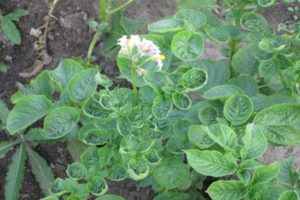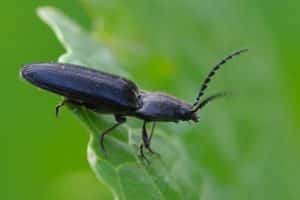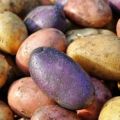Description of varieties of purple potatoes, its beneficial properties
It is very difficult to surprise with anything unusual today. Purple potatoes are an exception. This is justified by the fact that after heat treatment, the color of its pulp does not change.
How was the selection
This species was obtained by crossing the usual for all potato varieties with "American Relative". Don't be afraid that it has been modified. He first appeared in America, then in Russia.
The Siberian Research Institute of Russia, also engaged in the development of purple-pulp potatoes. Several variations have turned out, the color of which ranges from pink to dark purple. Sometimes purple shades are found
Basic views
The characteristics of potatoes are slightly different from conventional varieties with a standard color. In addition, different varieties have different properties from each other. Distinctive features common to all are:
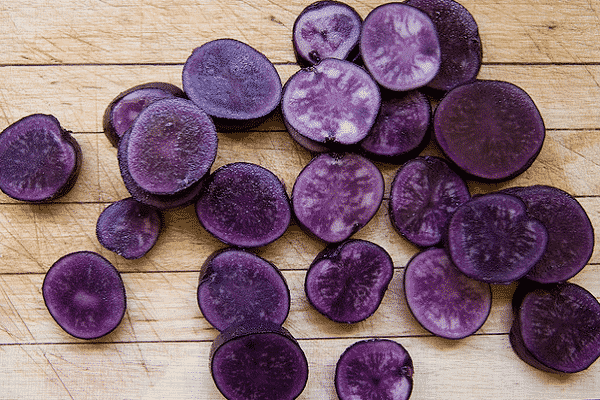
- The color of the pulp, it remains the same even after processing.
- The shape of the vegetable is elongated and oblong.
- The high content of nutrients in the tubers.
- Due to its thick skin, it can be stored for a very long time.
Two potato tubers contain the same amount of vitamin C as 1 lemon.
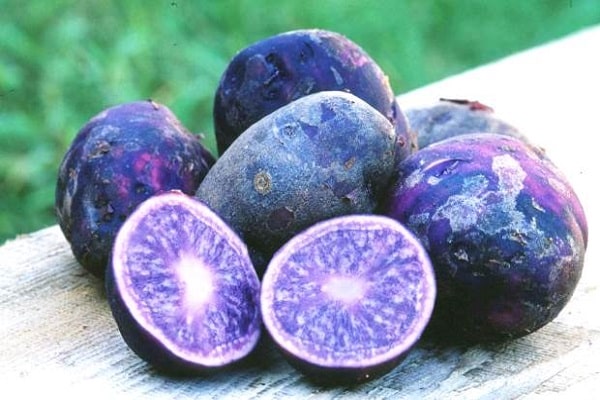
Root composition
As the description shows, potatoes are rich in ingredients:
- Vitamins: A, B, C, E, H, PP and others.
- Macronutrients: Potassium, Chlorine, Phosphorus, Calcium, Magnesium and others.
- Trace elements: Iodine, Lithium, Fluorine, Chromium and many others.
- Starch.
- Sucrose.
- Glucose.
- Fructose.
- Acids.
- Amino acids.
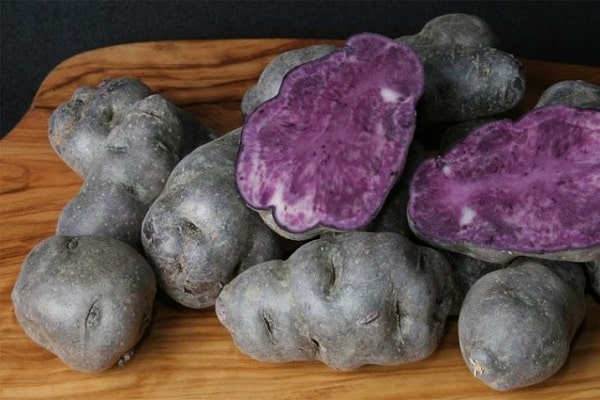
For 100 gr. potato varieties account for: 2 gr. proteins, 16 gr. carbohydrates, 0.4 gr. fat.
Varieties
The intermediate result is about 120 potato samples. The main varieties common everywhere are:
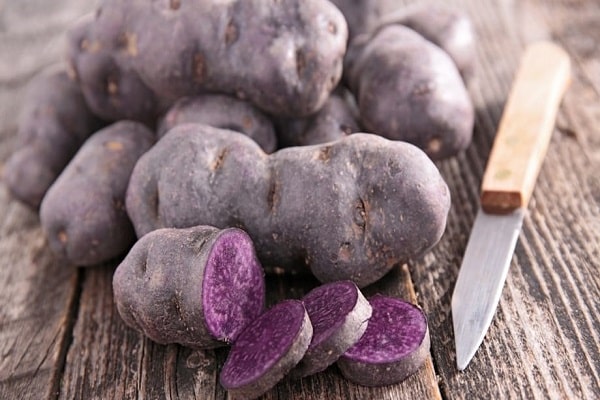
- All blue. Its pulp is not blue, but more blue-violet. The peel and pulp are separated by a white ring. It reaches full maturity in 80 days. The tuber weighs 200 grams. Basically, during heat treatment, the color is preserved. Only when boiled does it become paler.
- "Explosion". The color of the pulp and peel completely coincides, has a blue tint. The tubers of the variety are considered early ripening. Potato mass 120 gr. Very productive and immune to disease.
- "Lilac". Ready to use after 95 days. Tuber weight is about 80 gr., Excellent storage. The pulp and skin are the same shade. Lilac miracle of selection.
- "Peruvian purple". Breeders worked on its breeding for 200 years. It is considered a late species. Maturity occurs in 100-110 days. Weight 80 gr.
- "Adirondack Blue". Potatoes weigh 100 grams and ripen in 95 days.
- "Vitelot".Very popular with many summer residents, has a second name "Negritanka". The average weight of one tuber is 70–100 gr. Color with tints of blue and purple. Ripening period 110 days. Stored for a long time.
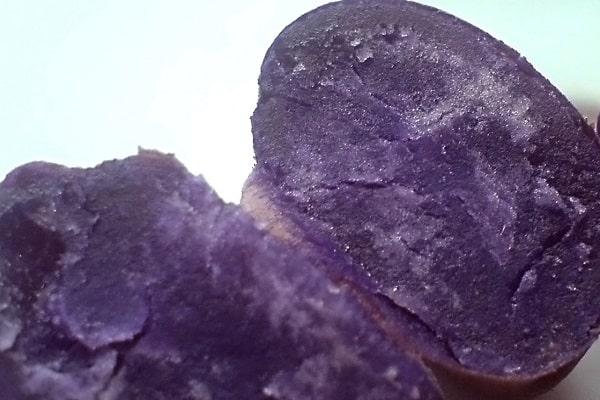
Summer residents refer to all varieties simply as blue potatoes. In order to make it clear what is at stake. The useful properties of tubers are not disputed by anyone, but on the contrary, they are only praised.
Who is it indicated and contraindicated for?
To understand this, you need to consider in detail beneficial properties of potatoes
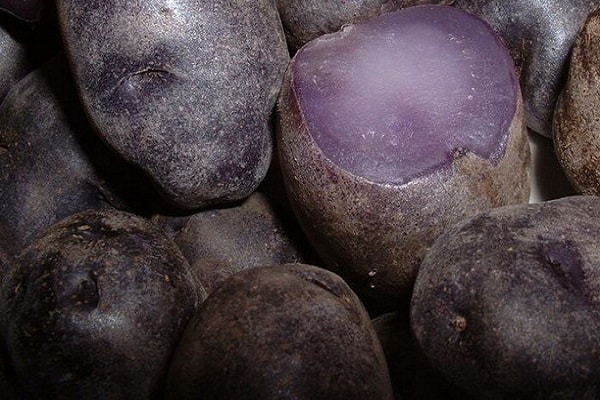
- Reduced pressure. Good for those with hypertension and bad for hypotensive patients.
- Antioxidants Their presence in large quantities slows down the aging process.
- Of the many vitamins found in purple potatoes, E and C are the most important for humans.
- Strengthening of vision. Useful for nearsighted people. Slows down the development of cataracts and glaucoma.
- Digestive system. Helps remove waste products from the body. Normalizes stool, relieves abdominal pain.
- Vessels and heart. Cleansing from toxins, potatoes reduce the risk of blood clots. Accordingly, it reduces the possibility of developing a heart attack and stroke.
- Immunity support. Helps to absorb iron and, thanks to folic acid, raises hemoglobin.
Limiting the consumption of the product is recommended for those who:
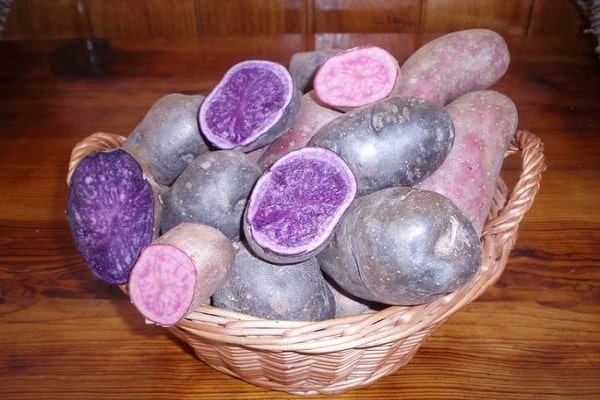
- High sugar.
- Constipation.
- Obesity.
- Low pressure.
- Gastritis.
For each person, the benefits and harms are calculated individually, depending on the state of health. In any case, purple potatoes can be eaten, but at the same time carefully monitor your well-being.
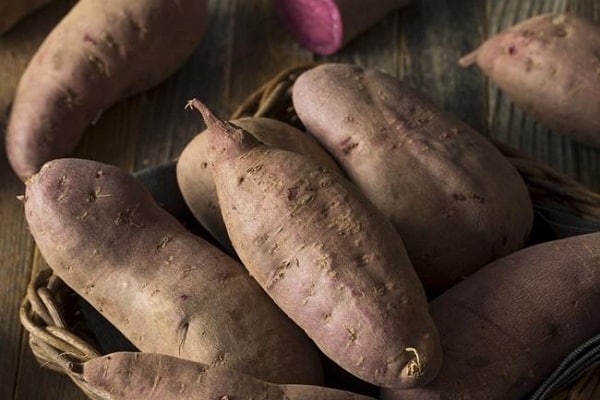
Growing potatoes
Purple-fleshed potatoes are more difficult to grow on their own than regular varieties. The main problems that you have to face in the growing process:
- Exposure to late blight and scab.
- Insect pests. The purple potato variety is more susceptible to attacks by Colorado beetles than others.
- It is better not to multiply with eyes. Because the tubers are getting smaller.
Otherwise, everything is as with ordinary types of culture. Timely watering, feeding, hilling and pest control.
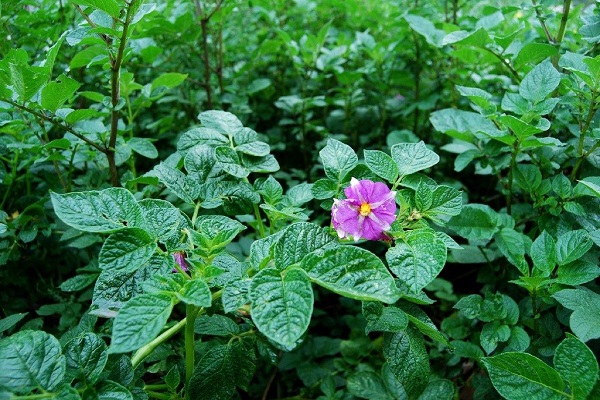
How to prepare the soil for planting
First you need to choose a place for the garden. Purple potatoes love lighting; it is best to choose a site on the south side. It is picky about the composition of the soil, the following types of soils are suitable:
- Floodplains.
- Sod-podzolic.
- Light loamy.
- Neutral sandy loam.
In order for the potato to take root and develop correctly in the future, the soil must be dug very deeply in the fall. You can immediately apply fertilizers, potassium salt (KS), superphosphate (S.) and humus (P).
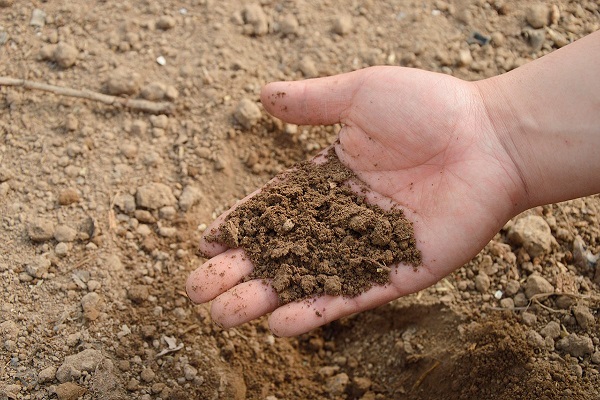
1 m2:
- KS-15 gr.
- C-30 gr.
- P – 0.5 kg.
It is better to leave the earth in clods, this will not give the pests the opportunity to hide at depth. They will freeze out.
After the soil warms up to + 5 ⁰С, you can re-dig and loosen the bed.
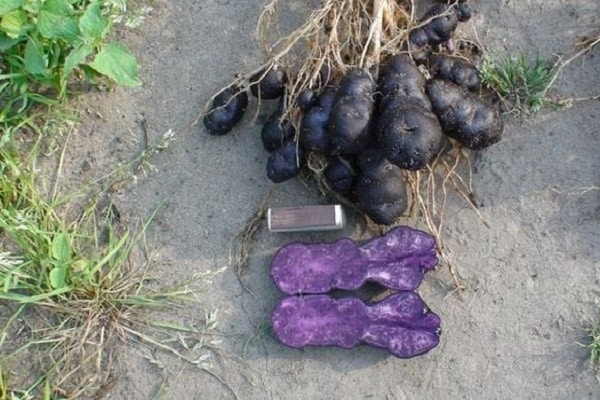
Planting and leaving
Before planting potatoes, a little wood ash is poured into the holes. The distance between the holes is 30 cm, their depth is 10 cm, the row spacing is 60 cm.
If you want to get an early harvest, purple potatoes are left to germinate in a warm room. In this case, the temperature should be at least + 15⁰С. This should be done 3 weeks before planting in the ground. You can cover it with a film, remove it only when the sprouts are about 10 cm.
Watering is required, abundant and frequent, mandatory periods:
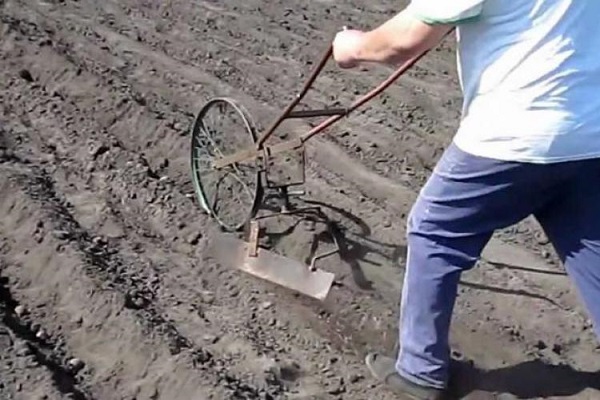
- After germination.
- During bud set.
- After the flowers fall.
It is recommended to monitor the flow of moisture to the roots. Its excess contributes to the development of rot, and a deficiency leads to the death of the plant itself. The resulting crust must be loosened, the roots must breathe.
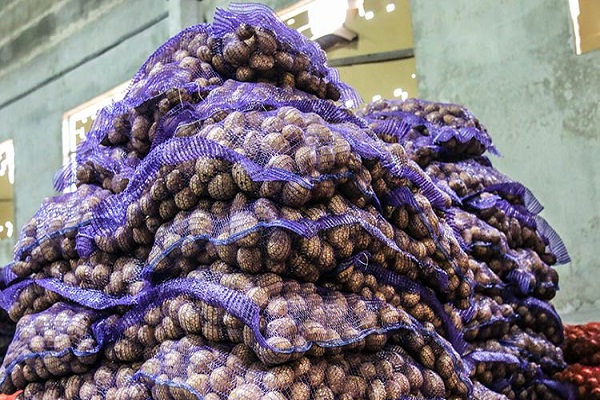
Weeding and treatment from insects and diseases should be carried out in a timely manner, the culture is sensitive to their development and attacks. Bushes may die. If there is no rain for a long time, it is recommended to irrigate the plantings.
Opinion of people who tried to grow purple potatoes
After studying the reviews of summer residents, you can understand what is special about growing potatoes, is it worth spending time planting at all.
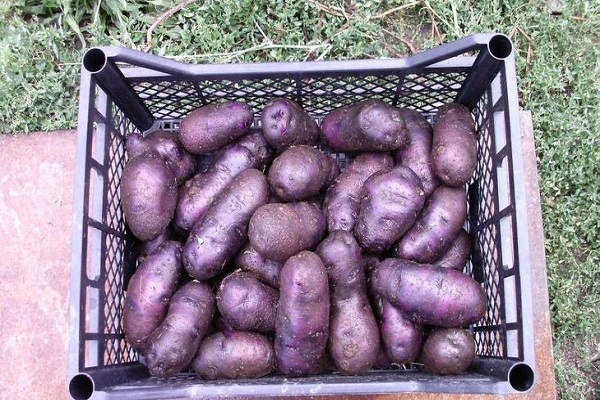
- Irina. I experienced strange feelings when I just held the tuber in my hands. Cleaned, but the color of the pulp has not changed. After I learned that there was no need to clean. In general, I was struck by the color of the finished dish.
- Vera. The first crop of potatoes was harvested. It turned out a bucket with 4 bushes. He considers this to be a good result. Since the planting material was small. We tried to bake in the microwave. The taste is ordinary, practically does not differ from the usual potato. Bloomed white, but the stems are purple. Recommends planting purple potatoes less frequently than regular varieties, about 70 * 70.
Exotic cultivation on the site is not uncommon. But if it is also a useful product, then its importance increases several times.

